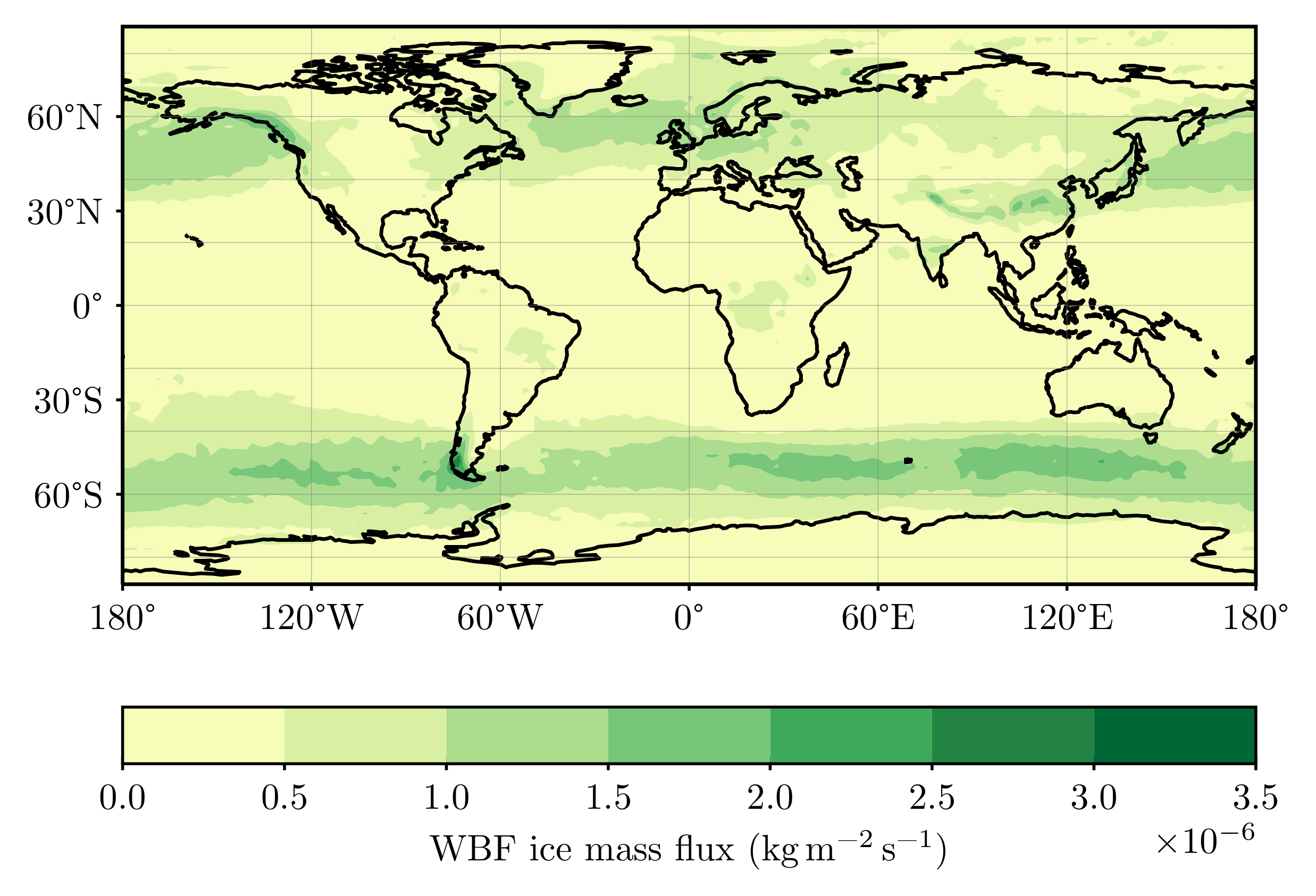Model Development and Maintenance
Simulating clouds in a global climate model (GCM) requires simulating the entire package of cloud related processes. Clouds usually form when there is upward motion (cooling) of air which can be caused by small-scale convective events or large-scale ascent of air masses e.g. along a warm front of a cyclone. For each of these cloud formation pathways we have to calculate if a cloud forms, how large it is, and how many cloud droplets or ice crystals are formed. Inside a cloud processes like freezing of cloud droplets, growing/shrinking of cloud droplets and ice crystals, aggregation of ice crystals, or riming of cloud droplets on ice crystals have to be simulated. Finally, cloud droplets can form rain drops and ice crystals that can aggregate to snowflakes and fall out which reduces the cloud mass and leads to precipitation at the ground.
Cloud droplet and ice crystal formation depend at least partly on aerosol concentrations and properties which is why our cloud model is coupled to an aerosol model which allows us to study aerosol-cloud-interactions.
In general, we work on improving all these processes and their interactions in the cloud model.
Recently, we have worked in detail on:
- Improving ice crystal shape and size representation (Dietlicher et al., 2018) and analyzing ice formation pathways (Dietlicher et al., 2019)
- Cloud microphysics and their complexity
Cloud microphysics and their complexity
Aerosols and their interactions with clouds play a large role in the radiative balance of the Earth. However, this radiative forcing is uncertain. An improved understanding of aerosols and cloud microphysics is therefore necessary to reduce the uncertainty in radiative forcing estimates and to subsequently improve climate change projections. With huge scientific effort, the representation of aerosols and cloud microphysics in climate models has become increasingly detailed and thereby costly. However, this has not reduced model uncertainty. And there are advantages to a simpler representation, such as an easier understanding. Which level of detail is needed for the influence of a process on model output to be sufficiently represented?
We investigate the questions surrounding the complexity of cloud microphysical process representations using the global climate model ECHAM-HAM (Proske et al., 2022). In sensitivity studies, we determine the sensitivity of the model to the full or partial removal of a process's impacts. Thereby we can identify processes to which the model is not sensitive. These are candidates for simplifications in the model. Understanding the sensitivity to complexity before reducing the former will also enhance our understanding of process interactions and can guide further research into processes that prove to be important or to those that appear misrepresented.
This project is part of the EU project FORCeS (external pagewww.forces-project.eucall_made). For more information, please contact Ulrike Proske ().

References
Dietlicher, R., Neubauer, D., and Lohmann, U.: Prognostic parameterization of cloud ice with a single category in the aerosol-climate model ECHAM(v6.3.0)-HAM(v2.3), Geosci. Model Dev., 11, 1557-1576, external pagehttps://doi.org/10.5194/gmd-11-1557-2018call_made, 2018.
Dietlicher, R., Neubauer, D., and Lohmann, U.: Elucidating ice formation pathways in the aerosol–climate model ECHAM6-HAM2, Atmos. Chem. Phys., 19, 9061–9080, external pagehttps://doi.org/10.5194/acp-19-9061-2019call_made, 2019.
Proske, U., Ferrachat, S., Neubauer, D., Staab, M., and Lohmann, U.: Assessing the potential for simplification in global climate model cloud microphysics, Atmos. Chem. Phys., 22, 4737–4762, external pagehttps://doi.org/10.5194/acp-22-4737-2022call_made, 2022
